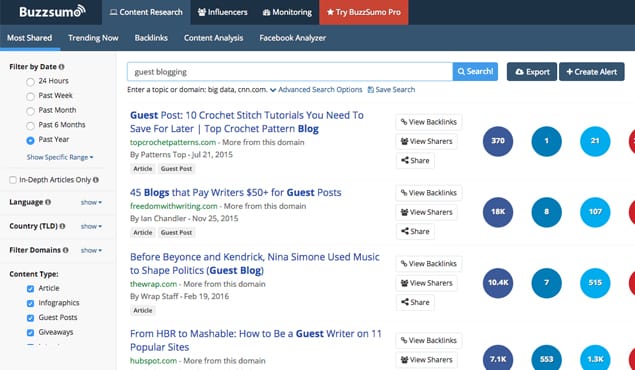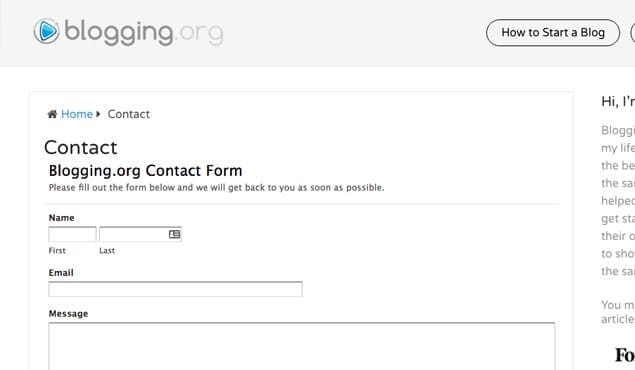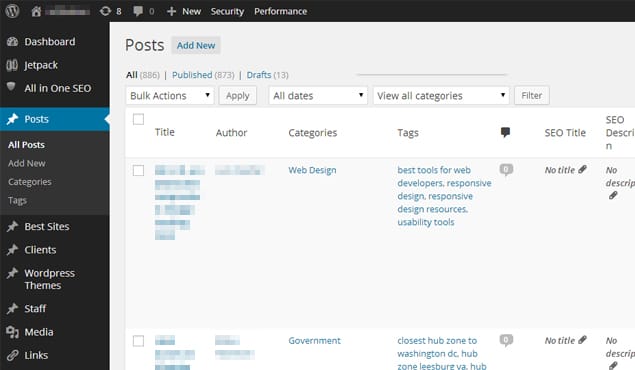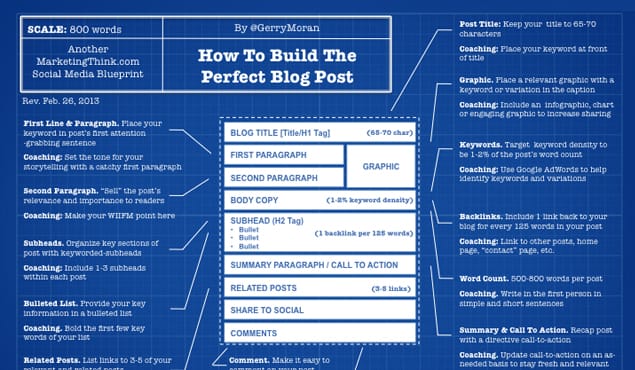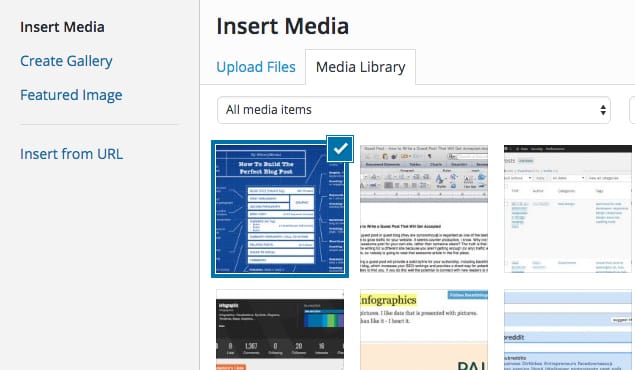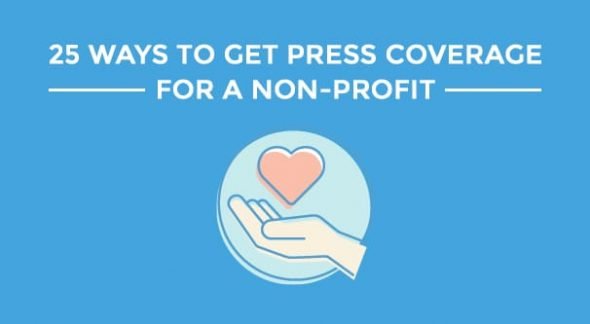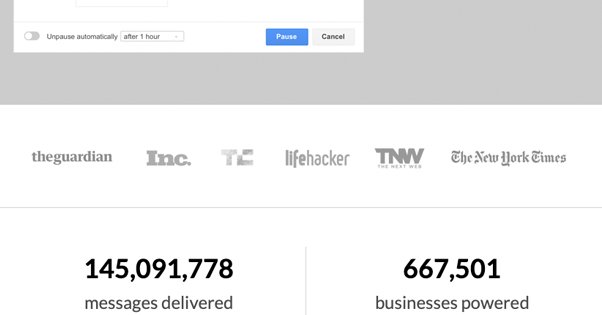The guest post or guest blog (they are synonymous) is regarded as one of the best ways to grow traffic for your website. It seems counter productive, I know. Why not write that awesome post for your own site, rather than someone else’s? The truth is that you’re writing for a different site because you aren’t getting enough (or any) traffic with yours, so nobody is going to read that awesome article in the first place.
Writing a guest post will provide a solid byline for your authorship, including backlinks to your blog, which increases your SEO rankings and provides a direct way for potential readers to find you. If you do this well the potential to connect with new readers is very high, as is retaining them on your own site.
But I’m a little ahead of the game with all this. The why of guest posting is less important right now than the how — writing just one of these isn’t necessarily easy. There’s a specific approach and method for everything. I’ll lay out how to write a guest post that will get accepted in clear terms below.
The Legwork
You might be surprised to find that the actual writing in a guest post is not the only aspect of getting accepted. You could be John Steinbeck and write a poor guest post; sure, it would be beautiful and brilliant and comment on the nature of our world, but that’s only one fraction of what it takes to get accepted to a major blog. (If you were Steinbeck, and somehow alive, you’d have no problem…you get the point.)
My point is that the legwork you do before writing your guest post is just as important as the writing itself, so you’ll need to think in broad terms when approaching your next article.
The legwork includes a couple key factors.
Researching Blogs
When you write a guest post you will first send emails to popular blogs, asking if they’ll accept a contribution. This takes legitimate time and research to do well. You don’t want to submit the same generic form to every single blog on the internet — in fact this is a perfect way to get zero responses.
You need to find blogs that are specific to your particular niche. Your niche has two factors: your blog, and you. Your blog should be based on you and your skills, but it will be highly specific if it’s going to succeed. You are usually more multi-faceted than your single niche blog, so can write topics in the general area of your blog, rather than a hyper-focused topic.
Let’s say you have a blog about making plant-infused honey from your own bees. Your blog posts include recipes, complex how tos, videos, and photographs of the entire process, from buying the bees to harvesting the honey to infusing it with plants like lavender.
You could then theoretically write for any blogs that have to do with honey, bees, custom foods, food storage, medicinal uses of honey, etc.
When researching different blogs think about who you are and what you can offer to that blog as an expert. Base your expertise mostly on your own blog, but not solely.
Emailing Potential Blogs
After you’ve narrowed your research down to blogs you can write successfully for, you’ll need to reach out to them.
This is an involved process with a number of rules, but there are a few things to note right off the bat.
- Follow a blog’s guidelines. If they don’t have any, say in your email you could not find any but would be happy to follow them if they do have them.
- Use a real name of the real person you’re emailing. Search extremely hard to find this; if you don’t, your email will likely go in the trash.
- Include pitch ideas. I’ll get into this more below.
- Include information about who you are, your writing history, and your blog.
- Be kind and attentive.
- Don’t make spelling mistakes.
If you follow the above you’ll make a good initial impression, which is necessary to continue down the path to publication.
Your Own Published Material
One of the above steps is to be clear in your email about your writing history. I’ll admit that this article makes the assumption that you’ve got your own blog and a number of published pieces that show what you are capable of.
The reality is that this will help your guest post get accepted. Having a blog, even a poorly trafficked blog, is better than nothing.
For those of you really starting out, the legwork really begins here. If you don’t have a blog but want to write, start by writing your own material. Publish 2-5 articles on your blog so that when you do email a potential site for publication, they will be able to read through your work easily.
The flip side of this is those of you don’t want a blog or won’t ever have one. There are plenty of guest bloggers out there who are specialized people in their field, like wilderness medics or lifeguards. Professionals can write excellent posts because they have direct experience, but often their literal writing abilities are lacking.
If you fall into this category, you’ll need to have at least one example of a “published” piece of writing in the field of your choice. You can publish something like this on Medium, or consider reaching out to your professional network and authoring a fact-filled article for your industry.
Writing That Guest Post
With your legwork out of the way, it’s time to start considering the actual post you’re going to write. This, of course, requires a few specific methods, all of which will help you get closer to that publishing goal.
More Legwork (Not Kidding)
You thought the legwork was over! Alas, it’s never over. Not in the guest posting world. I wanted to highlight one of the above mentioned steps because it is like legwork, but pertains to your actual article.
In your email you must include pitch ideas, and to include pitch ideas you must have, well, an idea to pitch. This is the crux of any good guest post: what is your article going to be about?
The simple answer: It’s about the specific blog’s niche.
But it’s way more complicated than that.
You already did the research to find blogs to apply to, so you have a running list of active, popular blogs in your wheelhouse. Now you have to pick one, and after picking one, you have to think of an article they want to accept.
This can be problematic, and stops many people from sending that email in the first place, or sending a poorly composed one and receiving no response.
When picking a topic you’ll want to skim through dozens (yes, literally dozens) of older posts on your prospective blog. Do this to get a sense of what kind of articles the blog typically produces. Are they list articles, or are they how to’s? Do they include stats and pie-charts, or do they like a more casual tone? These are all important to note, and will go into your writing.
The best thing you can do is look for other guest post articles and get a sense of what those are like.
Use all of this knowledge to craft a pitch. The pitch should include the headline, which describes exactly what you’re going to talk about, and should be somewhat catchy. Also try to include your keyword if that’s something you’re after. Focus on a topic that has not been written about before on that blog, but one that is hinted at or often discussed in the comments.
Prove you are an expert on this topic, and send it off.
The Content
I touched on this in the last section. If you’ve done your legwork on this step, your head is spinning with the number of articles you’ve read for a single blog. You know if your article is going to be a how to, a list, a personal memoir with a lesson, a technical approach, or a humor piece — there are plenty of blogs out there, and each will want something different.
You’ve got your pitch idea, and maybe you’ve even gotten the go-ahead to write that pitch from the editor. Now you’ve got to write the damn thing.
The reality is that everyone has their own writing process. I’m in no place to tell you how to write.
I could say you should go get a large cup of coffee, find a quiet empty room, and pound out 3,000 words before noon. I could also say you should do more legwork, like pulling up article after article on your selected topic, reading every single word on the planet, then outline your article in bullets and one-line sentences.
Do it Soon
Your approach is your approach, but at the end of the day you need to write the article, and you need to do it soon. If you get accepted to write a guest post, one of two things will happen. Either the editor will say when they want it by, and it will be soon, or they will say “whenever you have the time.”
The reality is you want to get that guest post to them in under a week no matter what the scenario is. Two weeks at the most if you’ve proposed an extremely long and overly comprehensive topic.
This is especially true for guest authors starting out. Think of it as your first day on the job. Show up ten minutes early, open the door for your boss, and get to work. If you’re in the habit of waiting weeks and weeks to submit a guest post you’ll likely be forgotten about, which greatly reduces your chance of being published.
Structure
After resolving to get it done in a couple days, you’ll need to think about structure.
If you pound out a bunch of words at once or take your time with research, in the end you’ll need to edit and craft an excellent guest post. Here are a couple pointers for getting the structure of a guest post right:
- Like all of these rules, follow the guidelines of the blog you’re applying to. If they specifically say they want List articles, give them a list. This is always your first step, and you’ll find a lot of major blogs that accept guest posts have very strict instructions.
- In lieu of clearcut rules, follow the structure of other posts or guests posts on said blog. This matters more in terms of formatting than anything else. You’ll want to copy this style just to save the editor of the blog some work.
- Use bullet lists and numbers. See what I’ve done with this list? It’s easier to read, and the brain processes these little chunks well. Include them in your article.
- Match the tone of the blog you’re writing for. This is important, and very hard, and why you do all the legwork. You don’t want to sound dumber than all the other posts, but you also don’t want to come off as a stodgy elitist. Find the middle ground for readability and engagement.
- Create a call to action. There can be multiple calls to action in your post, or a single overall call. The best articles will command readers to do something; if you do this effectively you will be asked back as a guest author because calls to action creates subscribers and, in the end, money.
Another factor to consider is your personal style. In your email and examples, did you sell yourself as a stylized author? People like to read things with personality. If you made it clear you can write informatively and engagingly, the blog will expect this. Write with juice. Write with passion. Make clear your opinions, grievances and loves, because readers want to read the words of a person, not a robot.
Byline
Finally, include a byline. This should be at the end of your article and provide a succinct one or two sentence summary of you, your expertise, why you’re super-duper awesome, and what your blog is. This is the chance to link out to your website.
While this seems very self serving (and it is), blogs also need to show readers how well versed they are. Including legitimate author bylines actually increases the reputation of the blog, because it shows the level of contributions they can receive.
Extra Curriculars
The structure and voice of a post is very important. If you write poorly, an editor will not publish you. However, there are a number of extra, final steps to making that a guest post great.
Images
Images are a must! Nobody will read a straight block of text.
In your correspondence with said blog you should ask or know whether or not you’re supposed to include images. Some blogs have stock photos they use and it’s not necessary. The blogs that don’t will love an author who supplies awesome images.
Make sure to use creative common images, and include links for where they came from.
Hyperlinks
You have not reinvented the wheel with your guest post, of that I am sure. Every excellent article gets ideas and bits of information from other excellent articles, and you should be in the habit of hyperlinking to these articles.
This is the common practice of source citation, which stems from journalism and academic papers. You must cite facts and quotes outright. Do this by embedding the URL of a site into text. Editors will love you for doing this correctly. They will lament you for including hyperlinks in a strange way — like at the end of the article in a list, in a separate document, or pasted inline.
In short, include hyperlinks exactly how you see them used on the website you hope to write for.
Document Attachments
Most blogs will tell you how they want to receive content, whether a Word Document, Google Document, or some other format. Follow their instructions to a T.
If they don’t tell you how, an attached Word document is a very safe bet. Don’t use weird fonts, any color other than black, or extreme formatting. Most online publishing platforms support basic Word formatting, so including Heading, Heading 1, Heading 2, bold and italics is a good idea.
Get To It
We’re at the end here. My suggestion for your perfectly acceptable gust post? Get to it. That legwork won’t walk itself, just like the words won’t appear on the page for you. Keep this article up in your browser tabs, and start the thing!
 ContentPowered.com
ContentPowered.com

